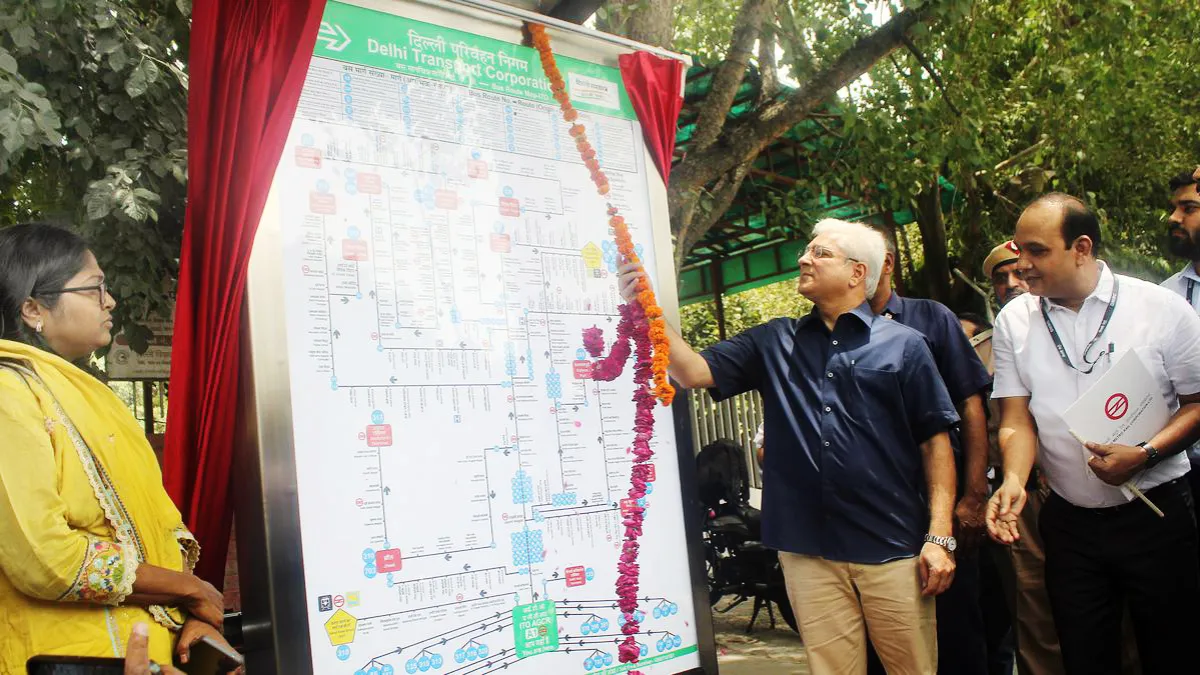
Kailash Gahlot, the Minister of Transport for Delhi, unveiled a cutting-edge bus route navigation map at an ITO bus shelter (BQS), on Wednesday. At 2000 BQS in the capital, bus route navigation charts are being installed in collaboration with Delhi Metro Rail Corporation (DMRC).
The renovation would cost Rs 27 crore from the Delhi government, including three years of upkeep.
The innovative bus route navigation map aims to improve commuters' accessibility, comfort, and efficiency by giving them precise information and assuring more seamless trips around the city.
DMRC will carry out this project across Delhi in the upcoming six months and will construct a stainless steel frame and lighted route map at the BQS.
Significance of the new route map:
Simple Navigation: While waiting at the BQS, passengers may quickly locate the right bus route and its final destination thanks to the route map. By doing so, misunderstanding would be removed, and selecting the best bus for their travel would be easier, saving both time and effort.
Access to important facilities: The inclusion of information about ISBTs, hospitals, and railway stations along the route would help commuters easily identify nearby facilities. This would prove particularly beneficial for those unfamiliar with the area, providing them with essential information for their travel needs.
Increased accessibility: The route maps' huge size would make sure that everyone at the BQS could see them. This will make it simple for commuters to read and comprehend the information shown without having to strain their eyes, thus improving the experience of traveling. The Delhi government is also putting the finishing touches on a Passenger Information System (PIS) that will be installed at the BQS and resemble the displays present at train stations and airports. The PIS will further improve passengers' convenience by giving accurate real-time information on the next bus's scheduled arrival time at the BQS.
Easy identification of adjacent amenities by commuters will be facilitated by the addition of information about ISBTs, hospitals, and train stations along the route. Those who are unfamiliar with the region would particularly profit from this because it would give them important information for their trip requirements.
Seamless intermodal travel: The route map will promote seamless intermodal travel by including information about adjacent metro stations, enabling passengers to easily switch between buses and the Delhi Metro. An integrated and more effective transportation network would result from this integration.
